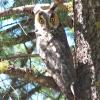Short summary of my conclusions:
Yukon Territory, Alaska, British Columbia, Northern California, Montana, Washington, Oregon, Manitoba, and Wyoming show multiple effects contributing to the Bigfoot phenomenon in these states. Hoaxing is present to a much higher degree here than in the rest of North America. Misidentification of black bears is another major contributor in these states. These two tendencies may be due to geographically-biased cultural effects (i.e., a general belief that this region is the "Bigfoot territory"). The remainder of the reports may be due to an uncataloged species.
Idaho, Alberta, Colorado, New Mexico, Texas, Utah, Ontario, Oklahoma, Arkansas, South Dakota, Saskatchewan, Missouri, and Arizona are very interesting. Hoaxing here is only present at the same rate as in the remainder of North America. Misidentification of black bears does not contribute significantly to Bigfoot sighting reports in these states. Nearly all non-hoaxed reports here are likely due to an uncataloged species.
The remainder of North America shows only contributions from hoaxing at this level of analysis. No correlations evidencing a contribution from sightings of animals, cataloged or uncataloged, were found in the data.
One recommendation that comes from this research is that we should actually be devoting most of our efforts, insofar as report collection and analysis of specific details in reports are concerned, on the second set of states, outside of the "core" region consisting of the first set of states. This is due to a lower rate of hoaxing and absence of black bear misidentification.
I hope to go deeper into this analysis in the coming weeks.


